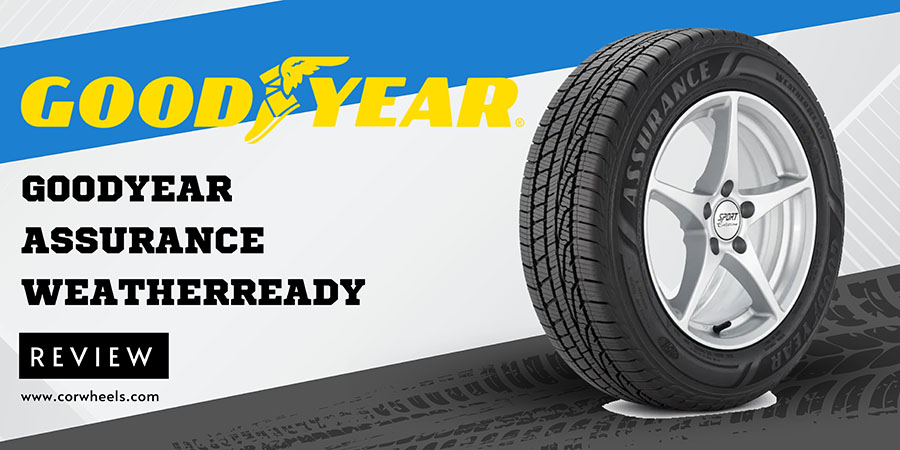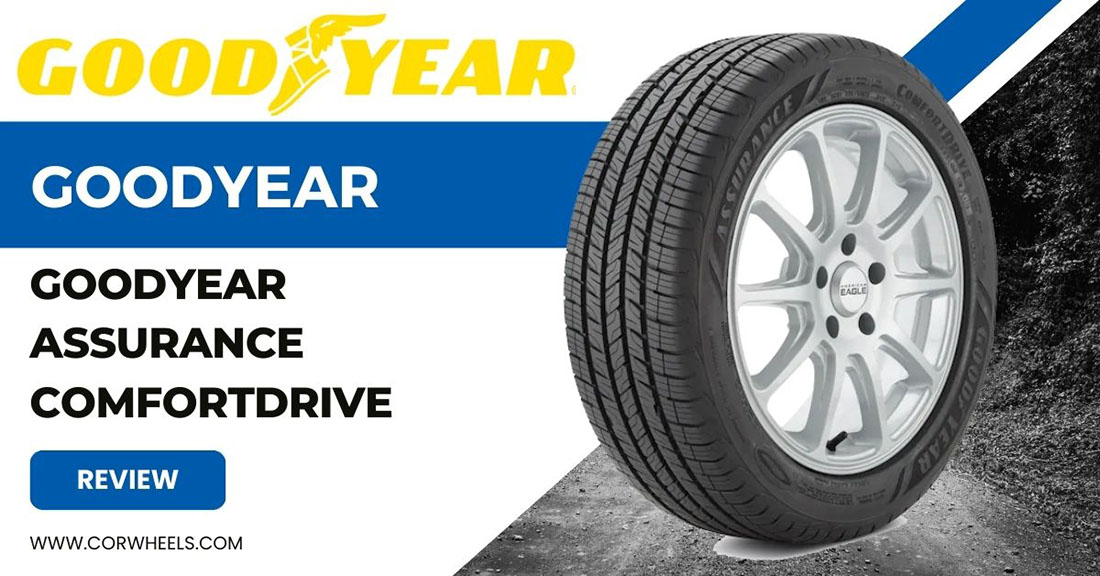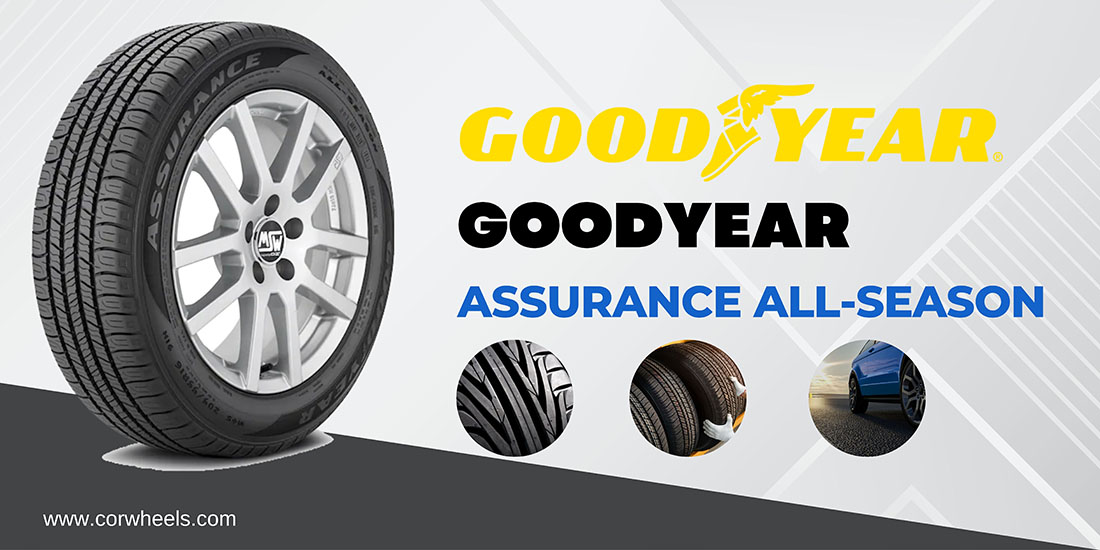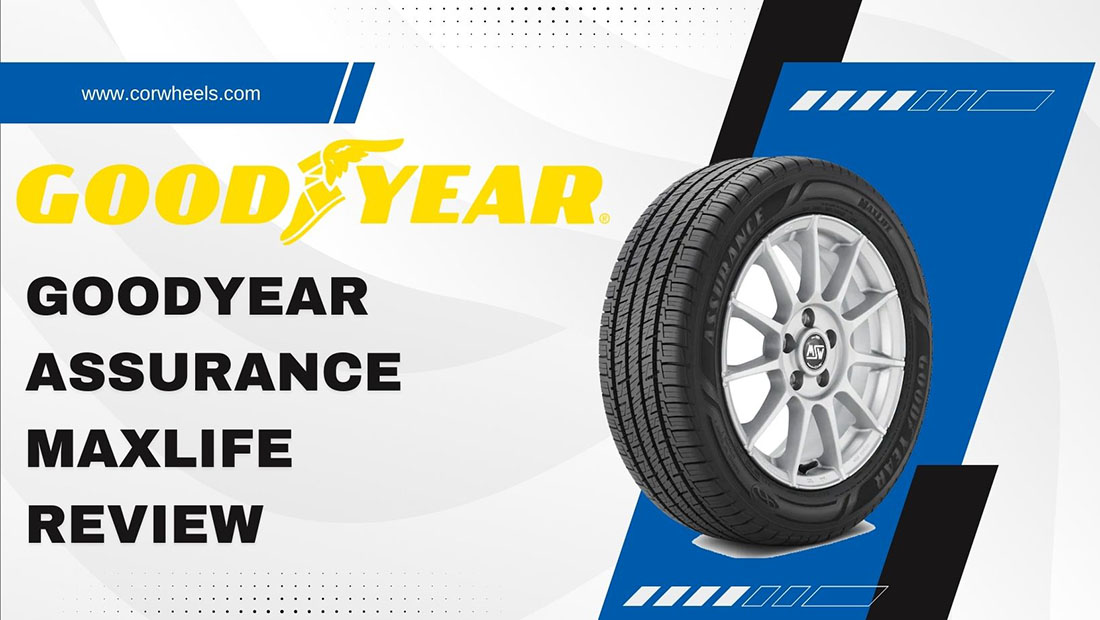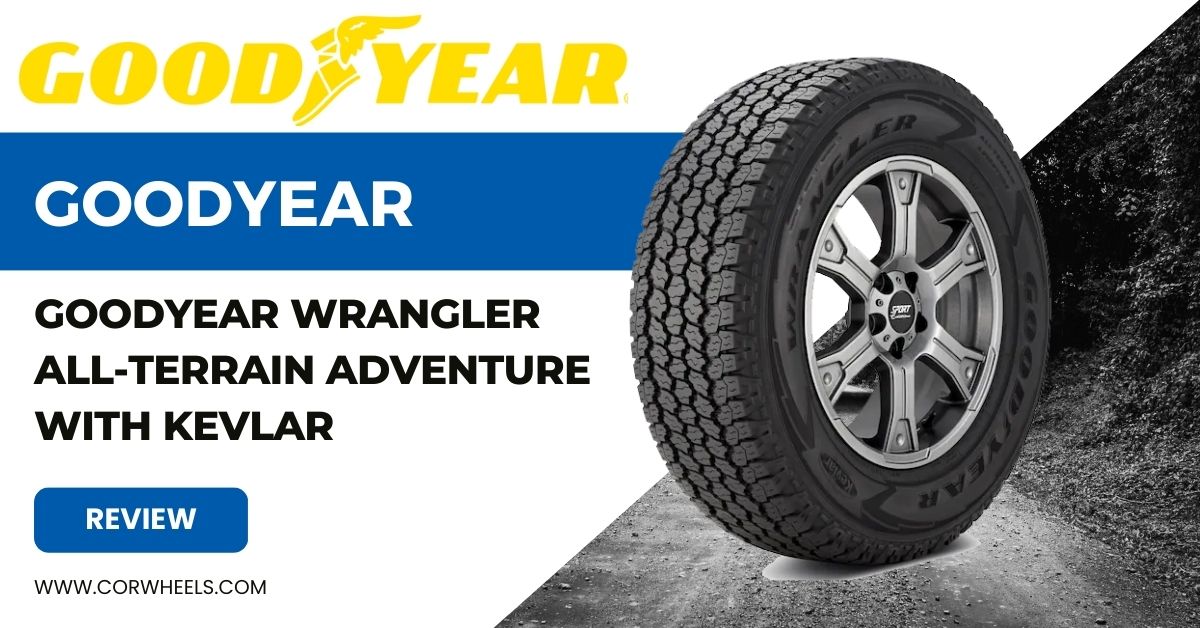Drivers who frequently venture into off-road terrains have considered Goodyear Wrangler Workhouse AT one of the best tire candidates for these endeavors. These models arrive with stronger, more durable compounds and inclusive add-ons in traction and tread wear to tackle diverse driving unpredictabilities, namely dirt, sand, and even mud.
Our COR Wheels test review will summarize the tire’s qualities and how it fares compared to certain models of the same sectors. Scroll for detailed discussions!
In this article:
Goodyear Wrangler Workhorse AT Specifications & Features
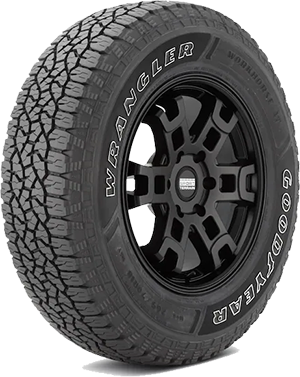
| Tire Type | Off-Road All-Terrain |
| Tire Size | 15″ – 22″ |
| Weight | 31.0 LBS – 55.0 LBS |
| Load Index | 102 – 126 |
| Load Range | D1 – XL |
| Speed Rating | – H: up to 130 mph – T: up to 118 mph |
| Warranty | 50,000 miles |
| Ratings | 8.5/10 |
Goodyear Wrangler Workhouse AT introduced advanced compound technology to deliver more dry/wet handling and consistent tread wear.
Specifically, each tread block is strengthened in both width and depth for chip-and-cut resistance against rugged surfaces – typical of most off-road paths. At the same time, the larger shoulder elements ensure larger contact patches and traction on open terrains while protecting the rubber against external damage.
No longer the directional/asymmetric/symmetric tread pattern like touring all-season tires, we could see a puzzle-like, more defined pattern with more grooves here to bite on different terrains.
Regarding hydroplaning resistance, Wrangler AT once again relies on the big tread blocks to manifest deep, aggressive channels for water control. The tread patterns also utilize multiple block angles to weave more biting edges on the tire’s surface (particularly the contact points), whose performance on light snow is enough to grant the tire the 3PMS (Three-Peak Mountain Snowflake Designation) symbol.
A closer look into the Workhouse AT’s internal construction reveals the support system familiar in most all-season/all-terrain tires, including:
- Two-ply, durable polyester casings, which balance tire comfort and reliability
- Twin steel belts with high-strength coats to provide a more robust foundation
By the time of this writing, the brand delivers 70 different sizes ranging from 15 to 22 inches in diameter, promising inclusive support for diverse terrains and terrain applications.
Goodyear Wrangler Workhorse AT Review & Performance Test Result
The Wrangler 265/70R17 tire size version has been used on the 2018 Jeep Wrangler car as part of our 2023 COR Wheels Tire Test. Reports of our overall findings are as follows:
1. Dry Performance: 8.9/10
Dry Traction: 9.1/10
Wrangler Workhorse AT delivered a powerful, trusted performance on dry roads; we could not help but think the Goodyear tires are specifically designed for these terrains.
The generous shoulders provide numerous rubber contact points, which explains why our Jeep Wrangler did not face much of an issue balancing itself on the cracked, grooved pavements.
Traction loss and hiccups were so brief it was hard to notice they even showed up in the first place – and not that it mattered, since they invited themselves out of the ride after only 2-3 miles anyways.
Sliding through the small gaps between larger cars during intense traffic tittered on the fine line between adventurous and comfortable. The tire’s communicative road grip ensured we could have a bit of fun and wilder leaning, while still delivering enough support for us to turn to in case mishaps occurred.
We played with different acceleration rates, from a slow and gradual 0-25 MPH increase to a head-whipping surge at 75 MPH in less than 10 seconds – and the tire coped well with all our endeavors. Had it not been for the slightly more obvious breathlessness during long, tighter curves, we would have given the tire a solid 9.3 or even higher.
After 2 to 3 hours, our tire took a new turn across mountain passes, and once again, Workhouse AT showcased its strength here. Except for more steering forces at rugged patches during ascents, the trip was far from dramatic or uproarious; some of our members felt confident enough to broaden the steering arcs without fear of slipping.
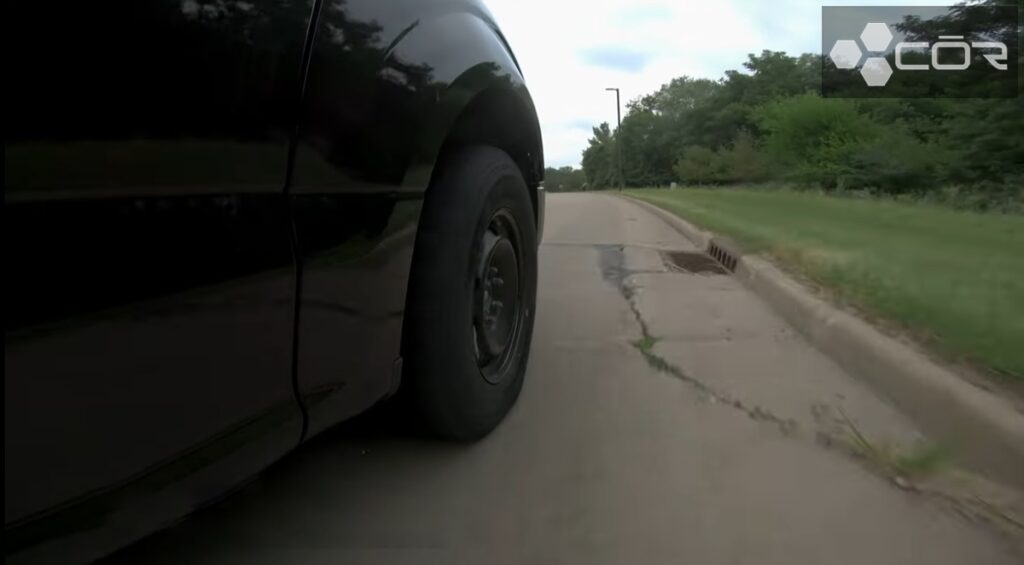
Corner Stability: 8.8/10
The tire performed in our favor regarding corner stability. Its center rib and supportive casings coped well with our cornering attempts and even showcased a dazzling sure-footed feel at tight roundabouts. Complicated entry/exit points and limited diameters gave other tires a hard time navigating but not Workhorse AT, and a bit of forward-leaning within extra margins were still considered under safe control.
However, this stability sometimes did bite us back at sudden bends around narrower roads. Cases like these required more flexibility and swift, punctual reactions – yet the tire acted out much stiffer than we would have liked.
Steering Response: 8.9/10
Corner precision relied heavily on steering response, so we were not surprised Wrangler AT performed very well in this regard. Input transfers were carried out smoothly without delays, delivering prompt, clean feedback to connect us with the car’s real-time handling and position. We took dominant control over direction changes and could even perform aggressive, unannounced hooks while maneuvering around incoming cars or roadblocks.
If there was one thing that slightly marred our experience, it was the lack of steering flex in more critical situations. Like the tire’s cornering discussed above, the steering response felt rote and rigid at narrow bends and hairpins, failing to deliver enough flexibility to tackle unforeseen angles. But that’s a trade-off for its aggressive traction.
2. Wet Performance: 8.4/10
Wet Traction: 8.5/10
Goodyear claimed that the tire embraced all terrains equally, but our experiments spoke otherwise: compared to dry traction, wet performances were alright but clearly did not receive the same attention.
Stagnant water within 1-3 inches was still tolerable thanks to the big tread blocks; however, any number beyond that sent our car into a flurry of skidding incidents. The tire marched with great difficulty at 30 MPH and found itself sliding on thin water layers every 1-2 miles. Reducing our driving rate to 20-25 MPH solved the problem, but extended the test ride two hours longer than intended.
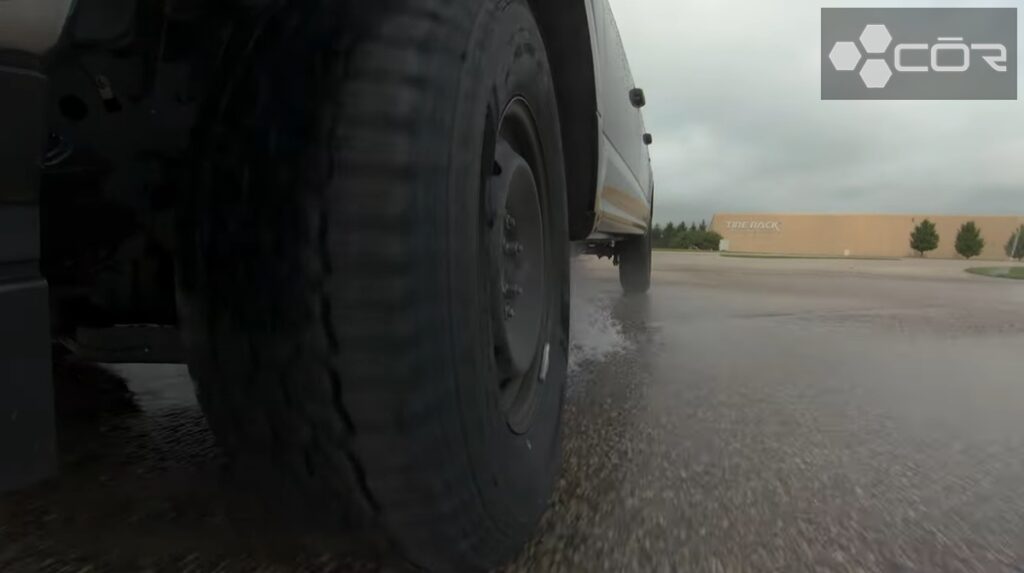
Hydroplaning Resistance: 8.2/10
Wet traction could still be considered satisfactory compared to some other tires, but hydroplaning resistance walked a dangerous line between good and bad.
The seemingly aggressive water channels only shined best in stagnant water/puddles below 3 inches. Their fatigue became more obvious as we tread further into the deeper zones, and it seemed the sipes’ gaps were not consistent enough to handle higher, sudden amounts of invading water. Hydroplaning was frequent and might have even thrown both us and the car backward if we had not paid enough attention.
3. Off Road Performance: 8.4/10
Dirt Traction: 8.7/10
Most other off-road tires we have tried performed much more confidently than the Goodyear Wrangler on dirt roads, but its delivery was still qualified enough to be labeled as good, considering its all-terrain title.
Multiple block angles gave Wrangler AT sufficient self-cleaning ability to deal with the clingy dirt, so our car only took less than 5 seconds to get out of particularly stickier road patches. The occasional lack of footings in the grooves could be compensated by on-time acceleration force: we found the dirt to be flung off much faster if our speed was revved up several notes (from 40 MPH to 44 or 45, for instance).
Steep hills threw much more loose soil than usual on our way, but Wrangler Workhouse AT handled them with class. Its interweaving shoulder elements delivered enough contact patch to grind through the particles without much difficulty, and the occasional delays between our steering inputs and responses were small enough to be passed off as harmless.
Accelerations to more than 50 MPH still needed to be carried out with more caution than what we would have liked – but generally way easier than on wet, stagnant-water roads.
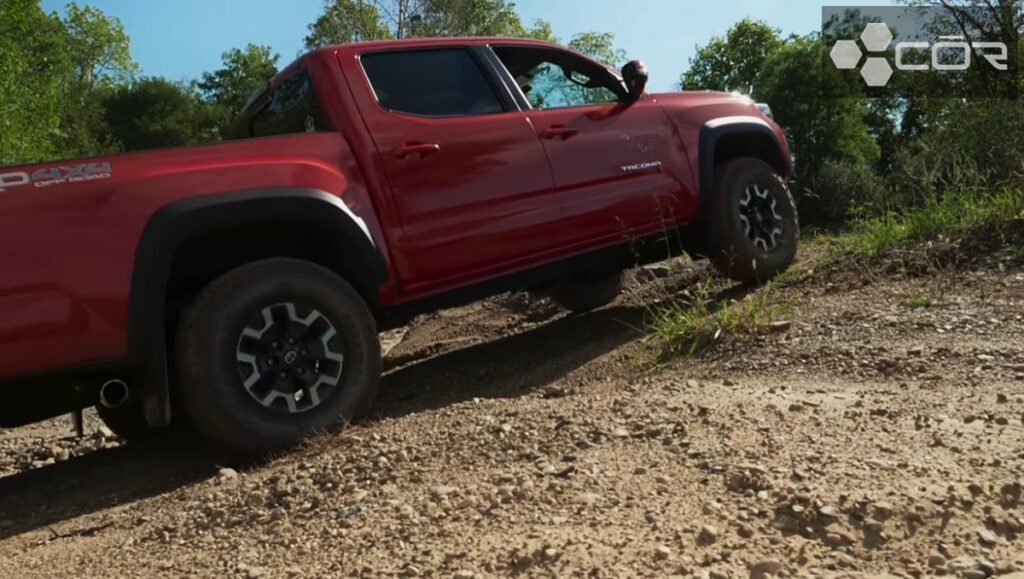
Rock Traction: 8.5/10
Similarly, Workhorse AT’s delivery on rock terrains was not on par with some other models but still delivered enough bites to be listed as good. The role of its advanced tread compound technology might not have been obvious in other terrains but shined through here, offering extra grippy anchors to secure our car on large cracks.
Bumps and jostles were inevitable due to the terrain’s rugged nature, but they did not hold us back as much as we had thought; guaranteed consistent turns of the steering wheel, we managed to traverse through the passage and navigate around larger obstacles without collisions/skiddings.
Accelerations to 50 MPH or even 55 MPH were welcomed at more palmed-out parts, but the thing about rocky terrains is that their texture is very unpredictable; hence, we kept things civilized by sticking with 40-45 MPH only.
Sand Traction: 8.2/10
Smaller sand particles found their way very quickly into the deep-seated grooves. Workhorse AT could still whisk sand off using the water channels and shoulder blocks, but they were too closely spaced for the occasion and hence, resulted in more frequent jitters and bumps than on rock/dirt terrains.
The good news is that these stutters were just borderline annoying and not considered dangerous. We never felt like the corner stability or steering response was compromised during acceleration, deceleration, or braking, and could still make close adjustments at narrower pins when the situation called for it.
Mud Traction: 8.2/10
Mud and sand were both considered loose surfaces, so we were not surprised Goodyear Wrangler’s traction on these terrains was more or less similar.
Sticky soil and water stalled down the car on steep ascents or around large boulders, but our tires handled them pretty decently with only some minor spuns. But on deeper mud, our Jeep got caught like in a spider web, as the smaller spaces between the tread couldn’t filter mud through those channels, and we felt the tires a ton heavier with a thick mud layer on them.
Like with sand, the jitters/slightly lackluster self-cleaning abilities were more annoying than life-risky and could still resolve themselves via confident, steady acceleration; the real question is whether such a feat is possible for beginners.
4. Winter/Snow Performance: 8.1/10
Light Snow Traction: 8.5/10
These tires arrive with the 3PMF symbol, so we already knew that their performance on light snow would be at least decent; but compared to other off-road tires we tested, it ranked last.
Wrangler Workhorse AT offered just-enough traction at 2-3 inches and seemed more struggling at 3-5 inches – though still stable enough not to plunge straight into the red-flag zone.
And when traveling uphill, they had an annoying tendency to spin on the spot for a brief 1-2 seconds – which would have been fine for drivers already used to it but extremely dangerous for first-timers.
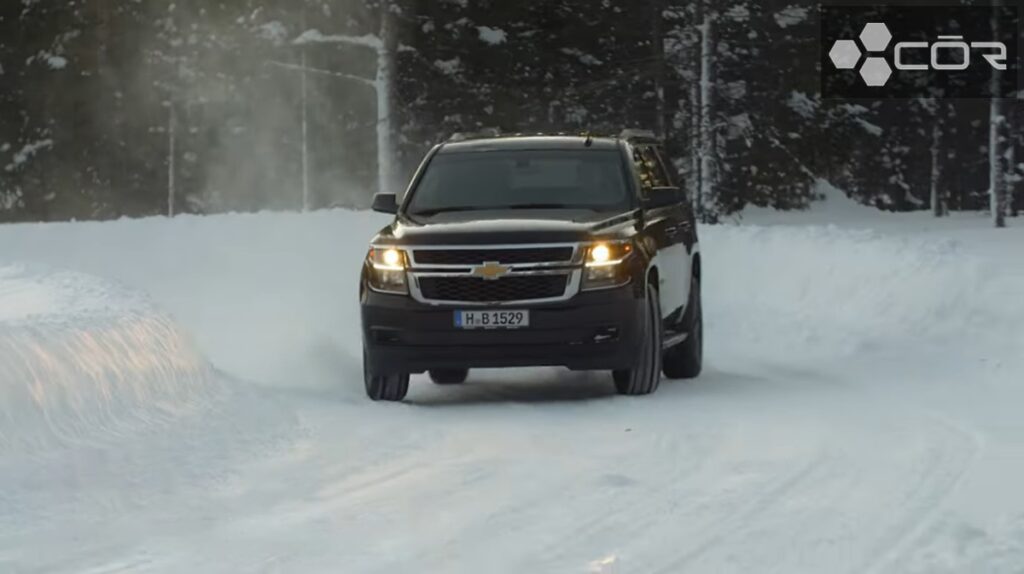
Deep Snow Traction: 8.2/10
Deep snow traction was underwhelming but decent.
Getting out of the thicker patches at below 30 MPH took a lot of time, but revving at more than 50 MPH pushed the car into danger zones. Somewhere between these two benchmarks seemed to work the best for us, albeit not without hydroplaning and sputtering every 3-4 miles.
Snow chains did help with snow blankets under 7 inches, but once we entered 8 inches and onwards, they did not make that much of a difference to us.
Ice Traction: 7.4/10
Goodyear Warehouse AT failed our expectations in this regard, but at least it did not rank last on the tire list.
Skidding and slipping were still in control but seemed to correlate with colder temperatures. We had to pull over every 4-5 miles at a station or near a bus stop to let the tires shrug themselves off snow/dripping ice water before resuming the ride.
And like with deep snow, a driving rate between 30 MPH and 50 MPH was the safest range. Any number beyond 50 MPH was only possible on packed snow (the state between ice and regular snow) or in favorable temperatures.
5. Road Comfort: 8.5/10
Ride Quality: 8.6/10
Despite not being the best performer in off-road conditions, Goodyear Wrangler AT was surprisingly great with ride comfort, even coming second on our tire list.
Stutters and panics might be more frequent on sand, mud, and deep snow/ice, but were barely present on dry roads and dirt. We did think the tires could have handled larger road imperfections more discreetly; still, compared to the overall length of the trip, they were classy and polished, even managing to leave clean cuts on rocky terrains if the steering was stable enough.
Noise: 8.3/10
Road noises were neither droning nor overly loud, but the problem was they were quite frequent. Even on dry pavements, its compounds still made loud contact sound with the grooves.
Some of our members could tune them out after a few minutes, but others were bothered by them for the rest of the ride – hence our decision to give it a score slightly lower than the average 8.5.
6. Treadwear and Durability: 8.6/10
Its treadwear was satisfactory enough for an off-road tire.
Fatigue and overheating did happen on hot asphalts but seemed not to leave much of an impact on the tire tread. The shreds in tread depth, if any, were not really noticeable during our 10-day test.
Wrangler Workhorse AT Pros and Cons
Pros
Excellent traction grade on dry roads and off-road dirt
Good treadwear
Comfortable, smooth ride
Overall composed feel, rarely putting drivers in real danger
Decent on sand, mud, rock (not too unfavorable)
Cons
Frequent noises
Lackluster wet-road traction compared to dry
Performances on deep sand/mud/snow and ice are underwhelming
Wrangler Workhorse AT Competitors & Alternatives
Goodyear Wrangler Workhouse AT was pitched against Cooper Discoverer Rugged Trek, Pirelli Scorpion All Terrain Plus, and Vredestein Pinza AT during our COR Wheels test.
- Compared to other tires, the Goodyear Wrangler gave a more composed feel; even in critical situations on ice or off-road terrains, there was rarely a sense of uncontrolling that might send drivers into a panic. However, wet-condition tractions need significant improvement, especially compared to the well-invested dry performance.
- Cooper Discoverer delivered nice snow travels thanks to the responsive steering and corner stabilities; these features, of course, also translate well into daily drives. Still, the mid-pack wet traction and loud road noises pulled down its overall rating.
- Pirelli Scorpion has a better wet grip than any other competitor in this group. We do love some steering refinements on the roads, though.
- Vredestein took the crown as the best all-around tire; it might not always be the strongest or grippiest tire, but none of its metrics ranked last on the list. The only exception is its light snow grip, trailing (but not by a long margin) behind the other three.
Conclusion
That’s our Goodyear Wrangler Workhorse AT review according to our tire test, and our team assumed that it delivered enough traction to be considered a decent all-terrain tire.
However, their performances were still the strongest on dry, well-paved roads (which are not off-road, by the way). And wet traction and ice/ deep snow grip leave a lot to be desired, especially when putting on the table with much more capable competitors in the tire industry. This is not the best choice if your off-road travels are very frequent.
President & Automotive Expert at COR Wheels
Robert Herrera has been with COR Wheels for 17 years and has a great passion for the automotive industry. During his time at COR Wheels, he has driven and test-driven a variety of vehicles.








